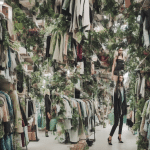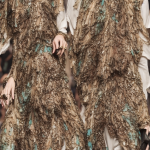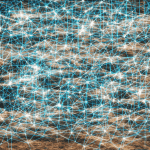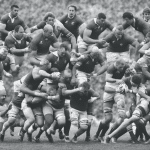In the dynamic world of photography, drones have revolutionized the way we capture the natural world around us. They allow us to reach unprecedented heights and provide unique perspectives, offering a new way to immortalize the beauty of wildlife and nature. In this article, we will explore the role drones play in this field, examine how they have changed the game, discuss the benefits they offer, and delve into the challenges photographers face while using them.
How Drones Have Transformed Nature Photography
Drones, with their ability to reach previously inaccessible areas, have drastically changed the landscape of nature photography. Before the advent of drones, photographers had to rely on helicopters or airplanes to capture aerial views. Not only was this expensive, but it also limited the control photographers had over their shots.
A lire également : What Are the Legal Considerations for Flying Hobby Drones in Urban Areas?
Now, drones allow photographers to get closer to their subjects without disturbing them or causing harm. This has made it possible to capture stunning images of wildlife in their natural habitats, offering viewers a unique glimpse into the lives of these creatures that would be impossible from the ground.
Drones also provide the opportunity to capture expansive landscapes from above, providing a whole new perspective on the natural world. From soaring over majestic mountain ranges to diving into the heart of dense forests, drones offer limitless possibilities for nature photographers.
Dans le meme genre : How Are Drones Evolving in the Sphere of Personal Videography?
Benefits of Using Drones in Wildlife and Nature Photography
Drones offer a multitude of benefits that have significantly improved the field of wildlife and nature photography. First and foremost, their aerial capabilities allow photographers to reach new heights, literally. This ability to fly high and low, and hover in place, provides unparalleled perspectives and vantage points.
Another significant advantage is the access drones provide. They can reach remote and inaccessible areas, such as dense forests, steep mountains, and even underwater ecosystems. This allows photographers to explore and document wildlife and natural landscapes that were previously out of reach.
Safety is another crucial benefit. With drones, photographers can safely observe and photograph potentially dangerous animals from a safe distance, without disturbing them or putting themselves at risk.
Additionally, drones offer a cost-effective solution for aerial photography. They are significantly cheaper than hiring a helicopter or plane, making aerial wildlife and nature photography more accessible to a wider range of photographers.
Challenges in Using Drones for Wildlife and Nature Photography
Despite the numerous benefits, the use of drones presents some challenges. One such issue is the potential disturbance to wildlife. Drones can cause stress and disruption to animals, particularly those not accustomed to human presence or noise. It’s essential to use drones responsibly and adhere to local regulations and guidelines to minimize any negative impact on the environment.
Weather is another challenge. Drones are sensitive to weather conditions, and heavy wind or rain can make flying difficult or even impossible. Photographers must carefully plan their shoots according to the forecast and be prepared to adapt if conditions change.
Learning to fly a drone and operate its camera simultaneously requires practice and skill. It’s one thing to fly a drone, but another to capture high-quality images while doing so. Many aspiring drone photographers underestimate this learning curve and can become frustrated if the results are not immediately satisfying.
Legal and Ethical Considerations
In addition to technical and environmental challenges, drone photographers also need to navigate a complex landscape of rules and regulations. Laws governing drone use vary widely by country and even by region within countries. In some places, you may need to obtain a license or permit to fly a drone, especially for commercial use.
Photographers must respect these rules and ensure their drone operations do not infringe upon privacy rights or endanger people, wildlife, or property. It’s crucial to always fly responsibly and ethically, respecting the wildlife and natural environments you are photographing.
Despite the challenges, drones have undeniably opened up a new world of possibilities for wildlife and nature photographers. With their unique capabilities, they provide unprecedented access, perspectives, and opportunities to capture the beauty and diversity of our natural world. As technology continues to evolve and improve, it’s exciting to imagine what the future holds for drone photography.
The Future of Drones in Wildlife and Nature Photography
As technology progresses, drones are becoming even more sophisticated and valuable tools for wildlife and nature photographers. Artificial Intelligence (AI) is one of the emerging trends in drone technology that promises to revolutionize this field even further. AI-powered drones can autonomously navigate difficult terrains, track moving subjects, and even adjust camera settings in real-time to get the perfect shot.
In addition to AI, drone battery life continues to improve, allowing for longer flight times. This will enable more extensive exploration and coverage of remote areas. Similarly, improvements in image quality, stabilization, and low-light capabilities are making drones an increasingly attractive option for capturing the beauty and diversity of the natural world.
Moreover, as the use of drones becomes more widespread, it’s likely we’ll see the development of more eco-friendly drones. These could be designed to minimize noise pollution and reduce stress on wildlife, as well as sustainability-focused features like solar charging.
However, as drone technology advances, so too must the regulations and guidelines governing their use. This will ensure that the growth of this exciting field is managed responsibly and sustainably, balancing the benefits to photographers with the need to protect and preserve the natural world.
Conclusion: Embracing the Drone Revolution
In conclusion, drones have undeniably revolutionized the field of wildlife and nature photography, offering new perspectives, unparalleled access, and a safer, more cost-effective solution for aerial photography. However, as with any tool, it’s essential to use drones responsibly and ethically. Photographers must respect the wildlife they capture, adhere to local regulations, and strive to minimize their impact on the natural environment.
Despite the challenges, the benefits and possibilities offered by drones are too significant to ignore. As technology continues to evolve, we can expect to see further advancements that will make drones an even more integral part of wildlife and nature photography. The future of this field is exciting, and it’s clear that drones will play a pivotal role in shaping it.
As of today, and looking forward, photographers should embrace the drone revolution, for it offers endless opportunities to capture the beauty and diversity of our planet from unique and breathtaking perspectives. The drone’s eye view is not just a new way to see the world; it’s a way to appreciate and share its wonders with a wider audience than ever before. Let’s use this technology wisely, cherishing and respecting the world it allows us to explore.










